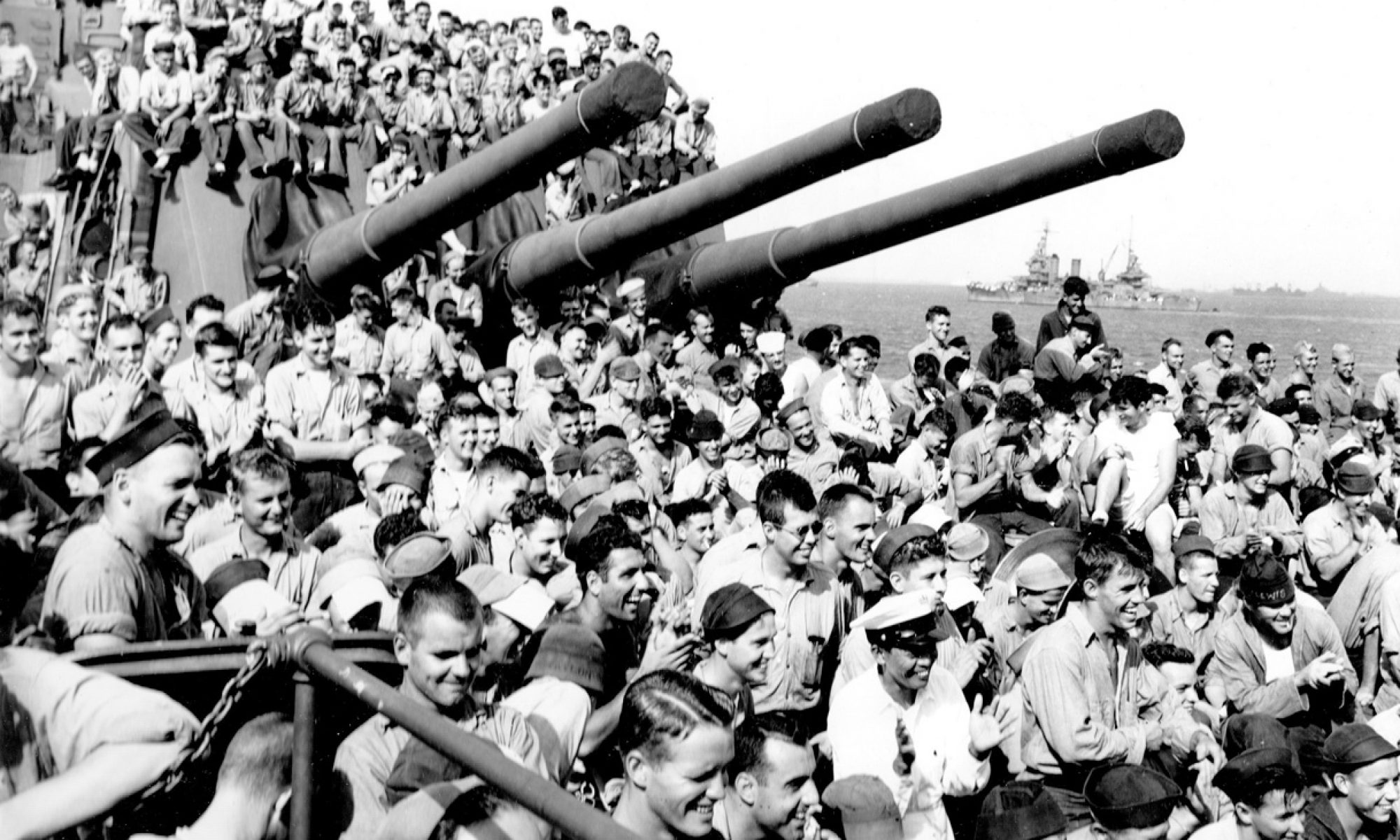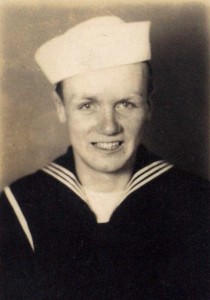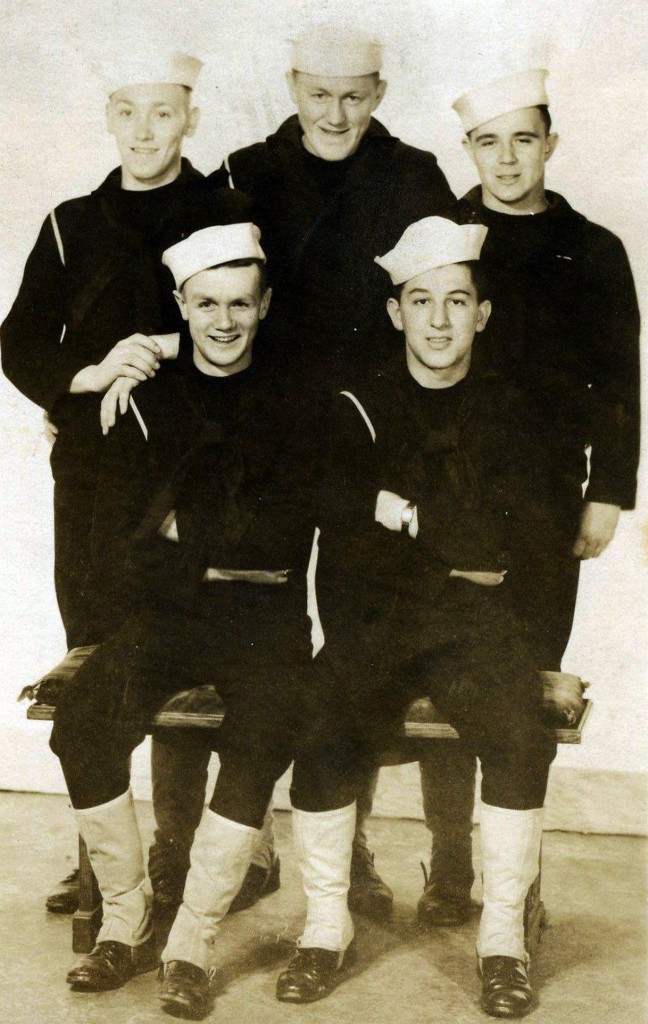12-1-10
It is funny, a little bit, to see pictures of the CA-69 guys. During their service at the height of the Pacific War, they were heavily censored. Letters were carefully read to make sure the boys did not reveal anything – especially which ship they were on and where they were headed (or had already been.) Journals / diaries were strictly forbidden. And, it goes without saying – NO PHOTOS ALLOWED. So when we see a picture of individual sailors or groups of guys, they were invariably on leave or on liberty. Liberty pictures more often than not show the boys “unwinding” – often with a drink in hand.
This did not happen very often for the crew. Most of their time in the Pacific was spent in combat. At the end of each operation, the ship would anchor in a remote lagoon for repairs and resupply. A few anchorages were so short that the guys did not even get liberty. When they did get liberty, they would be allowed to swim in the lagoon and go ashore with their “liberty rations” (two cheese sandwiches and two cans of cool beer each.)
The two pictures below are from my dad’s scrapbook. There were only two times when the guys were in “liberty port” long enough to buy a cheap camera and have the pictures developed. The first was in Pearl Harbor in December 1944. He has pictures of pals from this first leave. I can tell because the guys have their “whites” on and there are no medals or rank badges. The second was a year and a half later, when the ship returned to San Pedro (CA) for six weeks for repairs and radar retrofits. That’s when these pictures were taken – you can tell because the guys have their Campaign Ribbons and Battle Stars on their uniforms.
Steve




